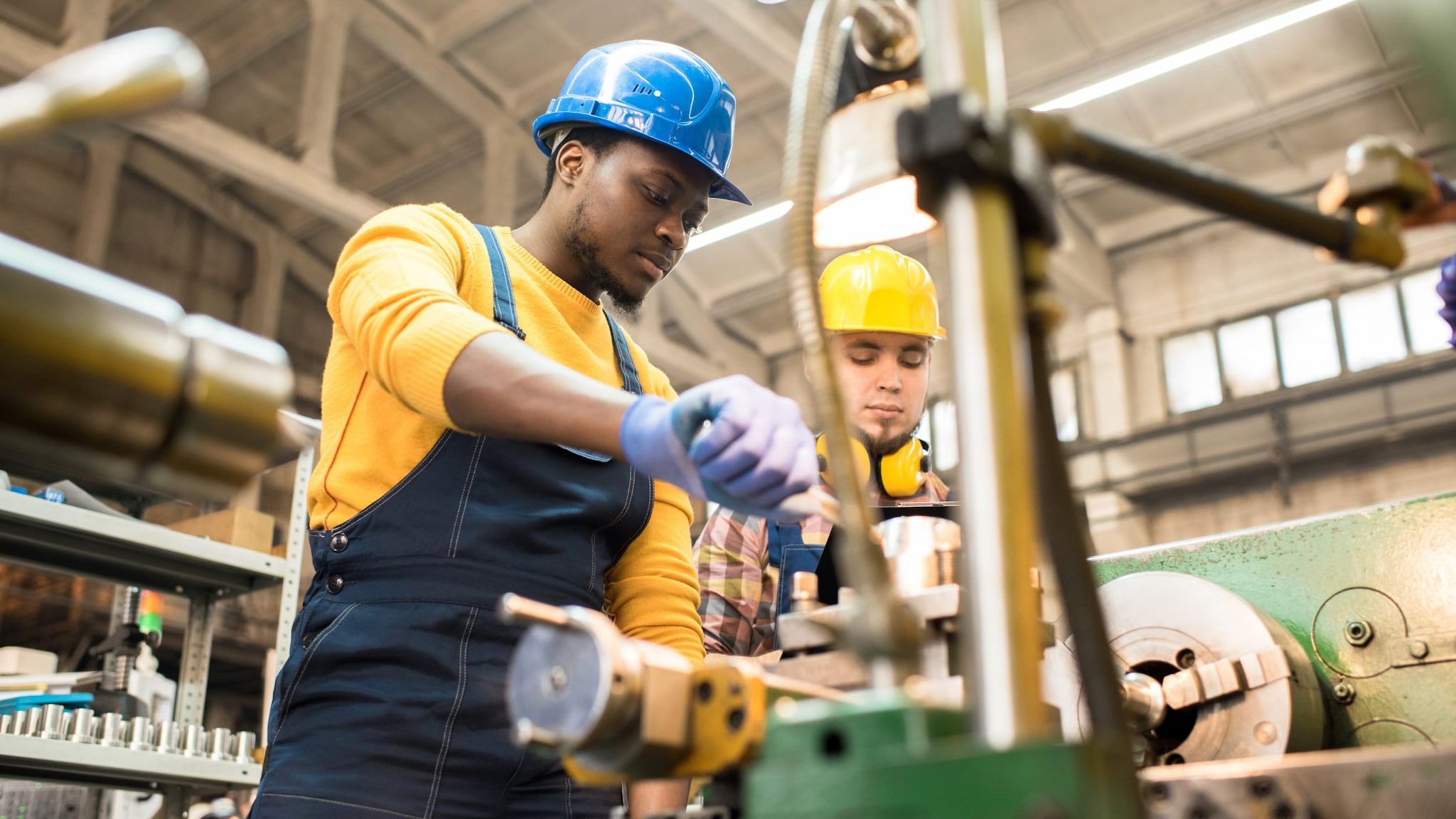Key points
- The Manufacturing Program provides leadership to reduce occupational diseases, injuries, and fatalities among workers in manufacturing industries.
- The Program works with works with partners in industry, labor, trade associations, professional organizations, and academia to protect the nation’s 14.7 million manufacturing workers.

Overview

To Learn More
The Manufacturing Program promotes research findings, practical guidance and technologies to manufacturers, stakeholders, and the public in general. The Program conducts research and provides recommendations to manufacturers on new technologies, including nanomaterials, robotics, wearable sensors, safe equipment design, and operations to prevent injuries to workers. The manufacturing sector includes establishments engaged in the mechanical, physical, or chemical transformation of materials, substances, or components into new products under NAICS codes 31-33. There are 21 manufacturing sub-sectors, including food, beverages, tobacco, textiles, petroleum, chemicals, metals, machinery, computers, transportation equipment, and furniture manufacturing. The largest sub-sectors are transportation equipment manufacturing, fabricated metal products manufacturing, and food manufacturing.
Program priorities
The Manufacturing Program has selected research priorities on the basis of burden, need, and impact and collaborated with other NIOSH research programs to write the research goals in the NIOSH Strategic Plan for FYs 2019-2026. Priority areas include (but are not limited to):
- Reducing hazardous exposures in the workplace leading to health concerns including:
- chronic conditions, reproductive health, or neurological disorders.
- chronic conditions, reproductive health, or neurological disorders.
- Preventing hearing loss from exposure at work to loud noise or chemicals that damage hearing.
- Reducing musculoskeletal disorders and specific respiratory conditions
- Preventing injuries and fatalities due to contact with objects and equipment
Accomplishments
NIOSH research on silica in stone countertop finishing
There have been multiple cases recently in the United States of silicosis in engineered stone countertop workers, including deaths. These workers perform tasks such as cutting, grinding, drilling, and polishing that can release high levels of respirable dust into the breathing zone of the worker. Newer engineered stone materials may contain a much higher level of silica than natural stone.
To help address this issue, NIOSH researchers have studied engineering controls that may be used to reduce worker exposure to silica dust. Some of this work was featured in Stone Update Magazine, Avoiding the Silica Dust-up, Sometimes, it's more than throwing water on the problem. The article includes an interview with a NIOSH researcher and videos created by NIOSH during engineering control studies. Other NIOSH products include a science blog, Outbreak of Silicosis among Engineered Stone Countertop Workers in Four States, and an infographic.
Resources
More information on specific workplace safety and health topics and useful resources can be found on the following pages:
- Ergonomics and Musculoskeletal Disorders Topic Page
- Noise and Hearing Loss Topic Page
- Occupational Cancer Topic Page
- Advanced Manufacturing Topic Page
- Robotics Topic Page
- Nanotechnology Topic Page
NORA Council
The Manufacturing Program helps lead the NORA Manufacturing Council, which brings together individuals and organizations to share information, form partnerships, and promote adoption and dissemination of solutions that work.
